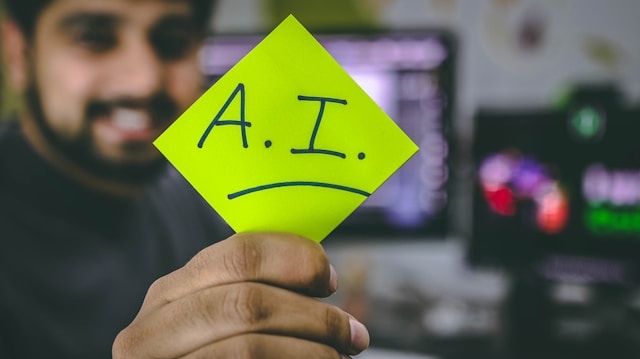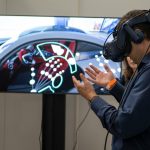In today’s fast-paced world, personalized health monitoring apps have become indispensable tools. The integration of artificial intelligence (AI) into these apps holds substantial potential for revolutionizing healthcare. By leveraging patient data, AI can offer personalized treatment plans, predictive analytics, and real-time decision-making, transforming how healthcare professionals approach patient care. Here, we explore the best practices for implementing AI in personalized health monitoring apps, ensuring healthcare systems achieve optimal patient outcomes.
Understanding the Role of AI in Personalized Health Monitoring
Before diving into the best practices, it’s essential to grasp how AI functions within healthcare apps. AI, through machine learning and advanced algorithms, can analyze vast amounts of health data. This analysis aids in crafting tailored treatment plans and offering real-time insights, enhancing healthcare providers’ ability to make informed decisions.
Have you seen this : How can deep learning improve the accuracy of facial recognition systems in security?
For instance, a PubMed free article might detail how AI-driven apps can predict potential health issues before they manifest, allowing for preventive measures. By constantly monitoring patient health data, these apps can alert healthcare professionals to anomalies, ensuring timely interventions. The fusion of AI and healthcare thus promises improved patient outcomes and more efficient healthcare systems.
Ensuring Data Security and Privacy
In the realm of healthcare, data security and patient privacy are paramount. When implementing AI in health monitoring apps, safeguarding patient data is crucial. Given the sensitive nature of health information, robust security measures must be in place to prevent breaches and misuse.
This might interest you : How can edge computing enhance real-time analytics in smart manufacturing?
Encryption and Secure Storage
Encrypting patient data both in transit and at rest ensures that unauthorized parties cannot access it. Implementing secure storage solutions, such as cloud services compliant with healthcare regulations (e.g., HIPAA in the United States), adds an extra layer of protection.
Anonymization and De-identification
Anonymizing and de-identifying data can protect patient identities while still allowing for the analysis needed to improve treatment plans. This practice is essential in maintaining trust between healthcare providers and patients, as it assures them that their personal information is safe.
Regular Audits and Compliance
Regular security audits and compliance checks are essential. Staying abreast of the latest security standards and regulations ensures that the app remains secure over time. This proactive approach helps identify potential vulnerabilities before they can be exploited.
Leveraging Predictive Analytics and Real-Time Decision-Making
Predictive analytics and real-time decision-making are at the core of AI-driven health monitoring apps. By analyzing historical and current patient data, AI can forecast future health events and recommend timely interventions.
Implementing Advanced Machine Learning Models
Utilizing advanced machine learning models allows apps to learn from vast datasets. These models can identify patterns and trends that human healthcare professionals might miss. For instance, an AI app could predict the likelihood of a patient developing diabetes based on their lifestyle and genetic factors, enabling early preventive measures.
Continuous Monitoring and Real-Time Alerts
Real-time monitoring ensures that healthcare providers are promptly informed of any changes in a patient’s condition. By integrating real-time alerts, apps can notify both patients and providers of critical issues, such as abnormal heart rates or blood sugar levels, allowing for immediate action.
Personalized Recommendations
AI’s ability to offer personalized treatment recommendations based on a patient’s unique health data is transformative. By considering factors like medical history, lifestyle, and genetic information, AI can suggest tailored treatment plans that are more effective than generic approaches.
Enhancing User Experience Through App Development
A seamless user experience is vital for the success of any health monitoring app. Ensuring that the app is user-friendly and accessible encourages widespread adoption and consistent use, both of which are necessary for effective health monitoring.
Intuitive User Interface
An intuitive user interface (UI) is key. Users should be able to navigate the app easily, find the information they need, and understand the insights provided. A well-designed UI enhances the overall user experience and makes the app more engaging.
Customizable Features
Offering customizable features allows users to tailor the app to their specific needs. For example, patients with chronic conditions might need more frequent monitoring and alerts, while others might prefer a more hands-off approach. Customizability ensures that the app can cater to a wide range of users.
Integration with Wearable Devices
Integrating the app with wearable devices, such as fitness trackers and smartwatches, can provide continuous health data, enhancing the accuracy and effectiveness of AI analysis. This integration allows for more comprehensive health monitoring and personalized insights.
Collaboration Between Healthcare Professionals and Tech Developers
Successful implementation of AI in health monitoring apps requires close collaboration between healthcare professionals and tech developers. This partnership ensures that the app meets clinical standards and addresses real-world healthcare challenges.
Involving Healthcare Providers in Development
Involving healthcare providers in the app development process is crucial. Their insights and expertise can guide the design and functionality of the app, ensuring it meets the needs of both patients and providers. For instance, they can help identify which health metrics are most critical to monitor and how alerts should be prioritized.
Continuous Feedback and Improvement
Continuous feedback from healthcare organizations using the app is essential for ongoing improvement. Regular updates and enhancements based on user feedback ensure that the app remains effective and relevant over time. This iterative approach fosters innovation and keeps the app aligned with the latest healthcare practices.
Training and Support for Healthcare Professionals
Providing training and support for healthcare professionals using the app is necessary. Ensuring they understand how to interpret AI-driven insights and integrate them into their clinical workflows enhances the app’s effectiveness. Ongoing support helps address any challenges and ensures smooth implementation.
Measuring Success and Patient Outcomes
Measuring the success of AI implementation in health monitoring apps involves assessing both patient outcomes and overall healthcare system efficiency. Metrics such as patient satisfaction, health improvements, and cost savings provide insight into the app’s effectiveness.
Tracking Health Improvements
Tracking health improvements over time provides tangible evidence of the app’s impact. Metrics such as reduced hospital readmissions, better management of chronic conditions, and improved lifestyle choices indicate successful AI implementation.
Patient Satisfaction and Engagement
Patient satisfaction and engagement are critical indicators of success. High levels of patient engagement suggest that the app is user-friendly and effective in promoting health monitoring. Surveys and feedback can provide valuable insights into patient experiences and areas for improvement.
Cost Savings for Healthcare Systems
Cost savings for healthcare systems are another important metric. By reducing emergency visits, hospital stays, and unnecessary treatments, AI-driven health monitoring apps can significantly lower healthcare costs. These savings benefit both patients and providers, making the healthcare system more sustainable.
Implementing AI in personalized health monitoring apps holds immense potential for transforming healthcare. By following best practices in data security, leveraging predictive analytics, enhancing user experience, fostering collaboration between healthcare and tech professionals, and measuring success through patient outcomes, healthcare providers can harness the power of AI to improve patient care. The integration of AI into health monitoring apps promises a future where healthcare is more personalized, efficient, and effective, ultimately leading to better patient outcomes and a healthier society.
In essence, the best practices for implementing AI in personalized health monitoring apps revolve around data security, predictive analytics, user experience, collaboration, and continuous improvement. By adhering to these practices, healthcare organizations can unlock the full potential of AI, ensuring that the promise of personalized health monitoring becomes a reality for all.






